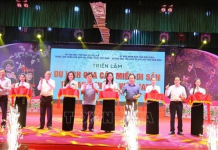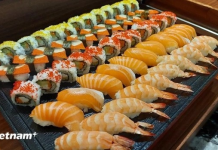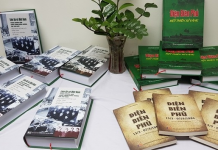Dam Thi Lan has looked into finding solutions to the garbage problems in polluted rural areas since she was a student at the School of Heat Engineering and Refrigeration, Hanoi University of Science and Technology. This desire was realized when Lan studied for a master’s degree in energy and environment. She studied and experimented with a garbage incinerator with a capacity of 500kg/hour.
Lan’s husband, Nguyen Van Quyen, a lecturer at the School of Heat Engineering and Refrigeration, was also studying about the working principles of garbage incinerators at that time.
|
Dam Thi Lan is a lecturer at the National University of Civil Engineering and director of BKEET Joint Stock Company. Photo: Cong Dat |
Quyen’s incinerator design “when matched with mine, creates a complete and feasible waste incinerator structure,” Lan said.
To test the operation of her incinerator, Lan gathered all the garbage at the Hanoi University of Science and Technology. Her experiment was successful after three months of using the incinerator which daily burned waste for 10 consecutive hours.
Lan marketed BD-Anpha at Techmart 2012 where her invention won a trophy.
In 2013, Lan debuted her solid garbage incinerator with an hourly capacity of 500 kilos, which was installed in Hai Minh commune, Hai Hau district, Nam Dinh.
This incinerator was one of three Vietnamese inventions which seized a gold medal at the Seoul International Invention Fair (SIIF) 2018 held by the Korean Invention Promotion Association and World Intellectual Property Organization in December 2018.
…to preeminent products for waste treatment in Vietnam
Following the success of her garbage incinerator BD-Anpha, in 2013, Dam Thi Lan and her associates studied and introduced industrial solid waste incinerator CONI which mainly burns nylon and industrial fabric scraps. The heat radiated from the operating incinerator is used for steam boilers at paper mills and garment factories.
The first CONI incinerators were used at Dong Tien Paper and Packaging Plant in Binh Duong and AFC Paper Mill in Ho Chi Minh City.
BD-Anpha is also used in 30 cities and provinces and island areas nationwide. Its hourly capacity has been raised to 10,000 kilos of garbage.
Dam Thi Lan and her associates have constantly improved BD-Anpha’s technology to address the specific requirements for waste treatment at different localities across the country.
|
Dam Thi Lan talked about the garbage incineration technology at the Presidential Palace in 2013. Photo: Files |
To meet the need of disposing 100 tons of garbage per day in Tinh Gia district, Thanh Hoa, Lan has improved the burning productivity by utilizing the heat to warm the air before it is supplied to the incinerator and applying technology to compost garbage without having to sort it out.
To treat industrial waste at Phong Khe and Phu Lam paper craft villages in Bac Ninh, BD-Anpha has been improved to utilize the heat for the supply of saturated steam to plants and industrial parks, given the high heating value of industrial waste.
In Hau Giang, electromagnetic generation of power is applied for BD-Anpha to dispose of 200 tons of garbage each day.
Lan’s team has also introduced medical waste incinerators with an hourly capacity of 15, 20, 30 and 50 kilos which are being used in Ninh Binh, Ha Tinh, Cao Bang and Tay Ninh provinces, and solid and liquid waste incinerators which are used in the Ministry of National Defense’s environment projects.
These are the results of Dam Thi Lan’s hard work to address the waste problem in Vietnam. In Lan’s journey to find waste treatment solutions, she speaks warmly of her husband “without whom, my technological system can operate and develop, but not to such a large extent as today. My husband is the heart of the technology and I am the person who nurses, protects and improves it.”



